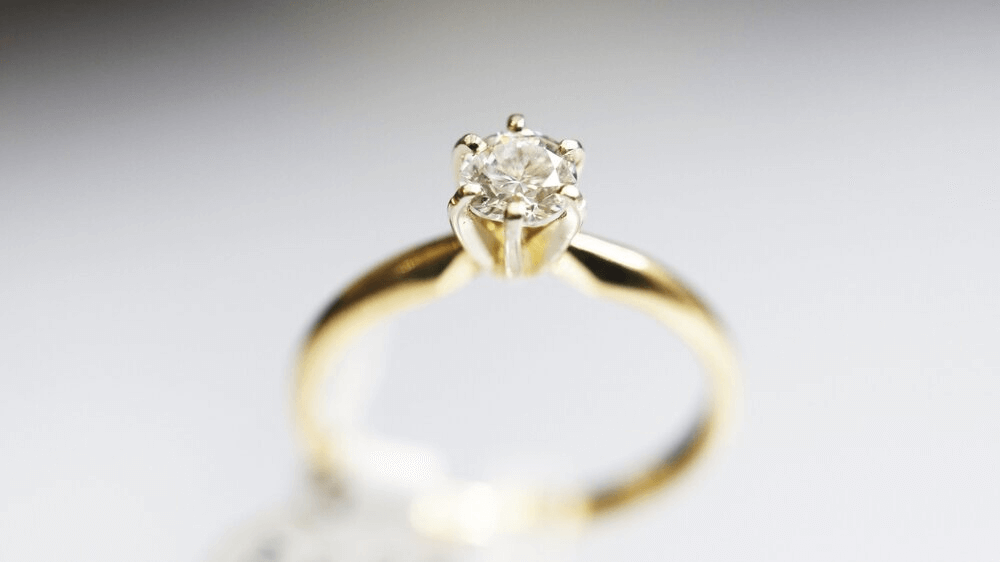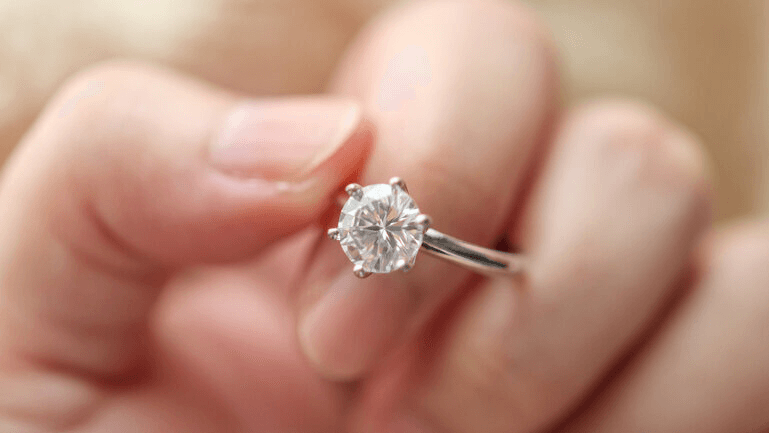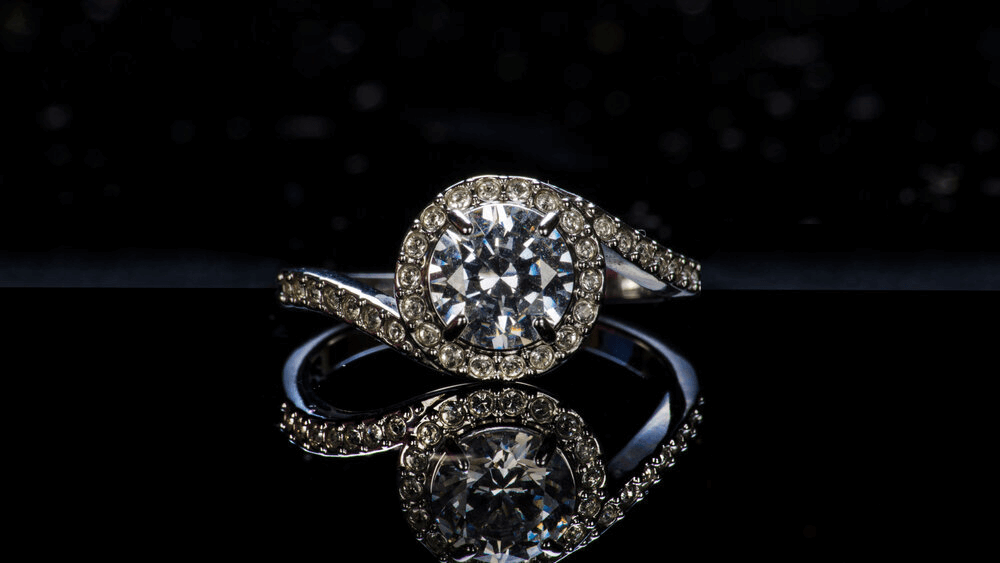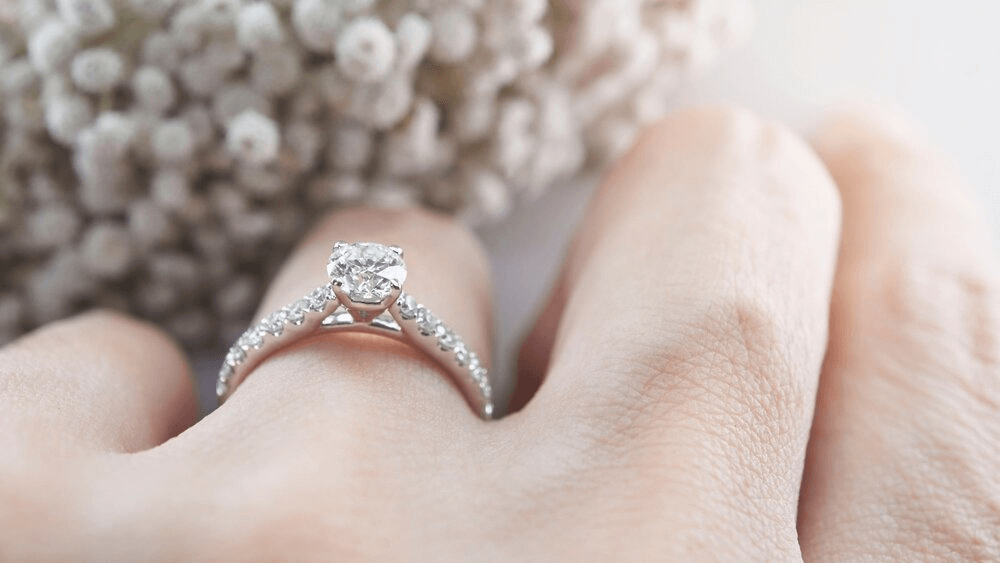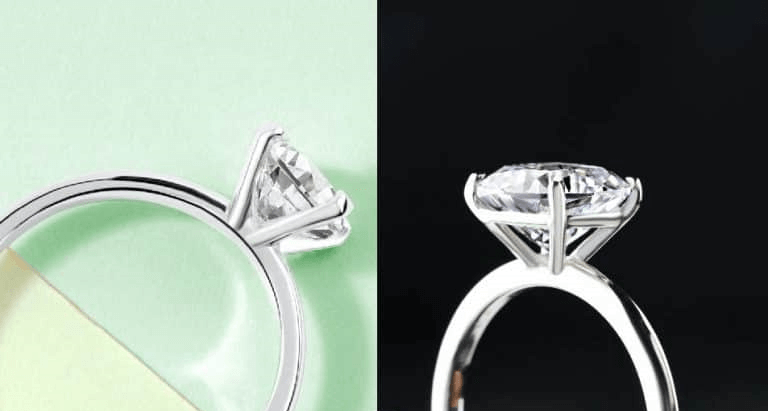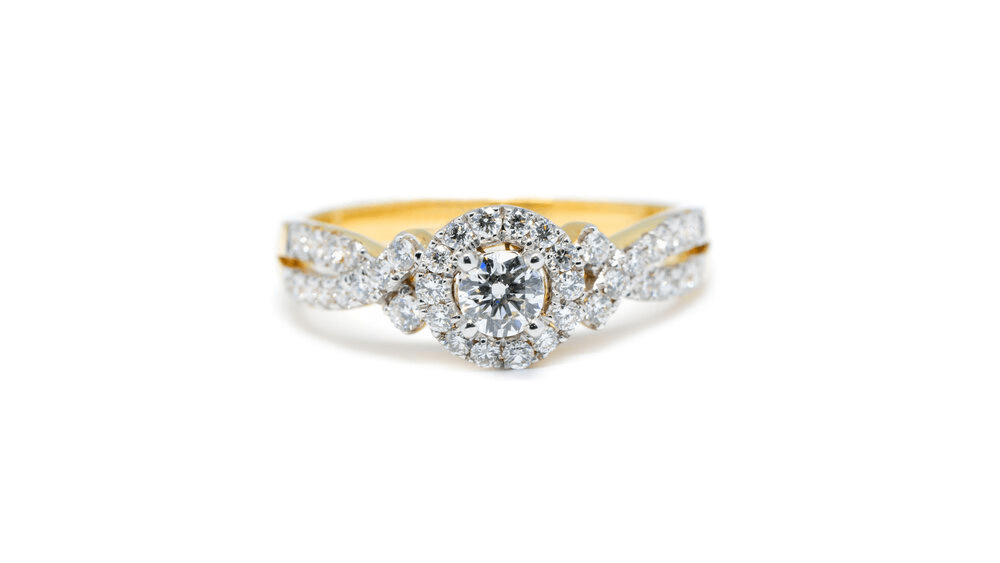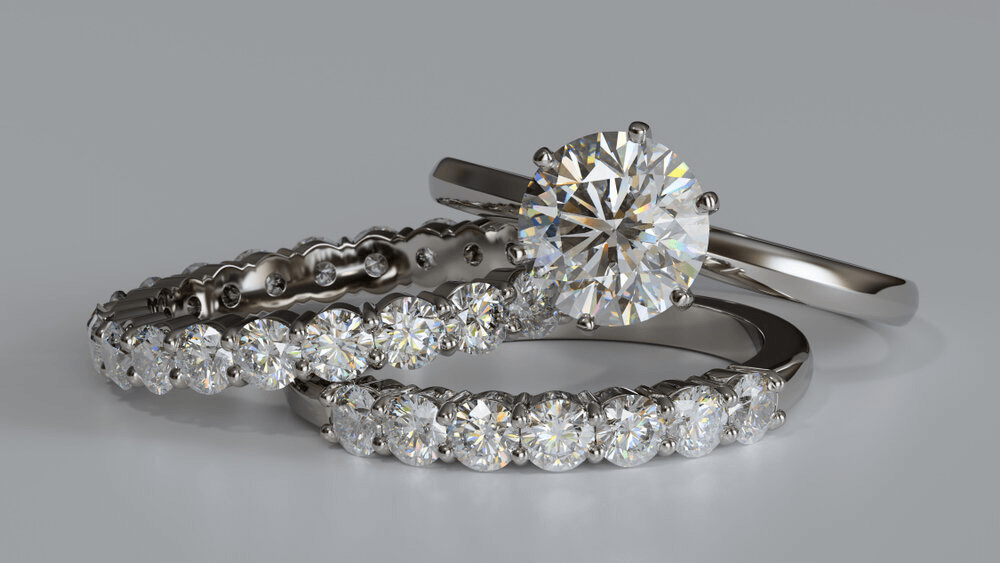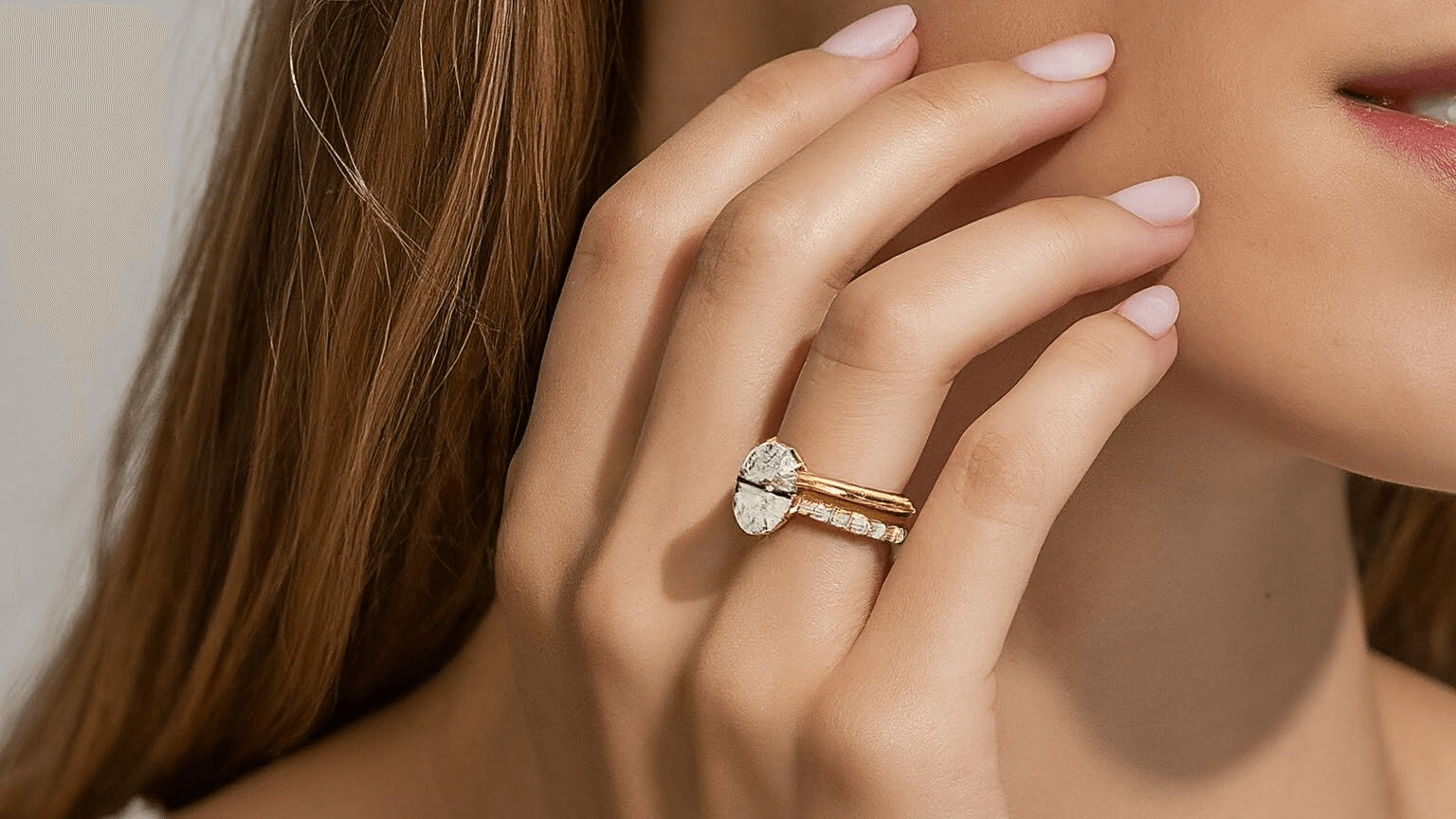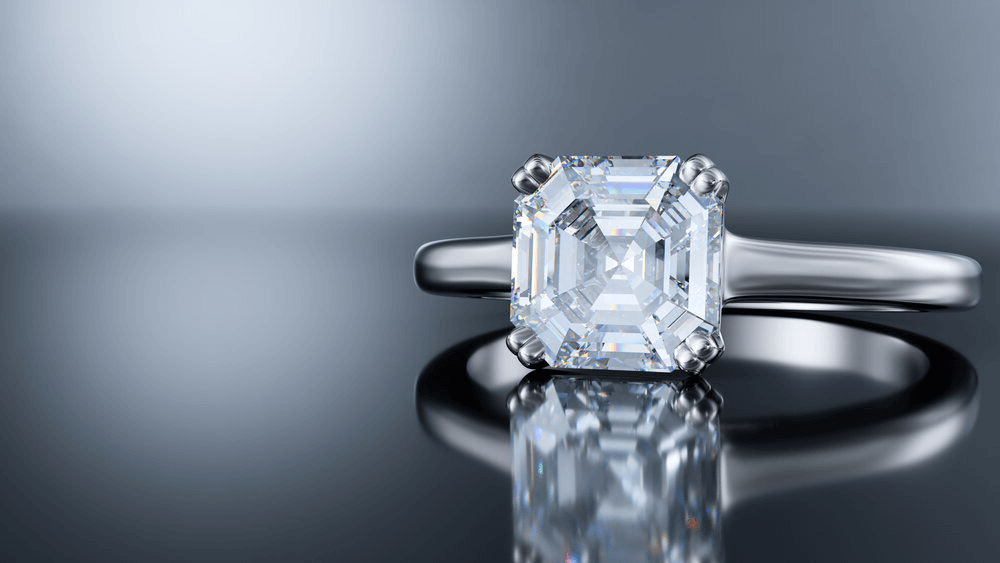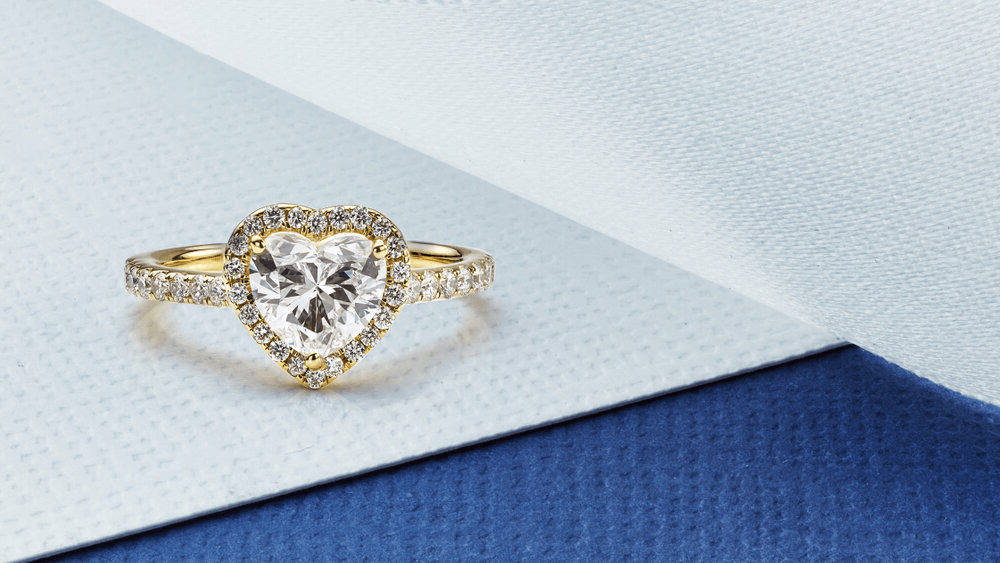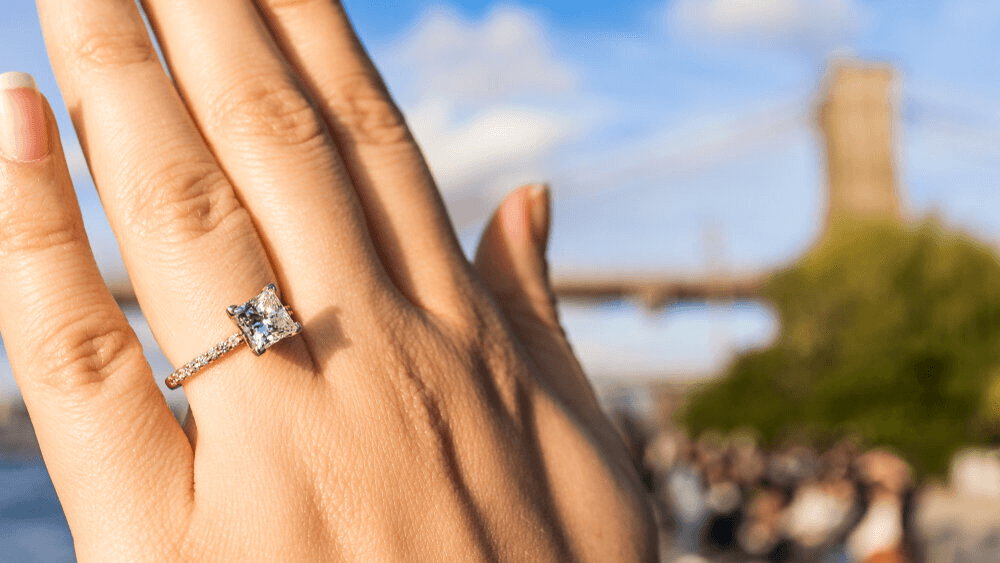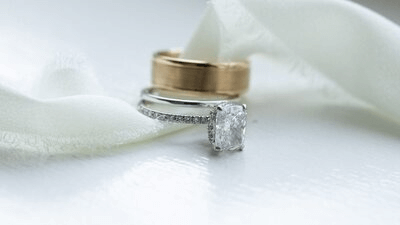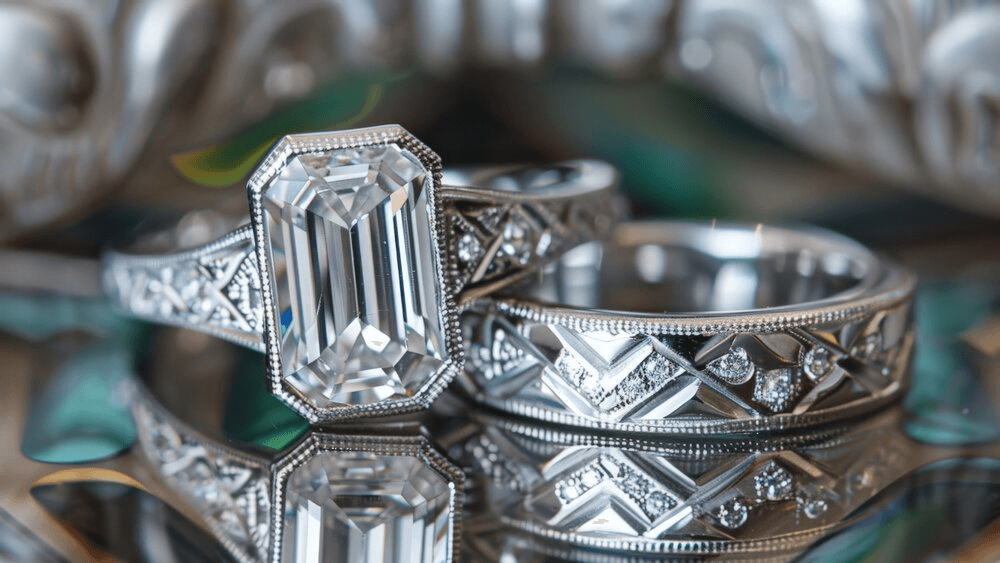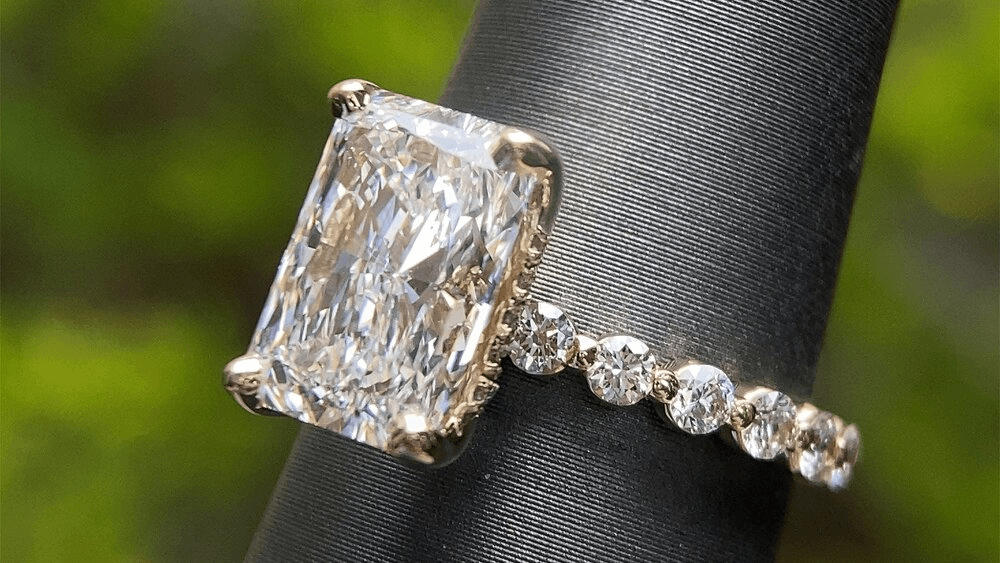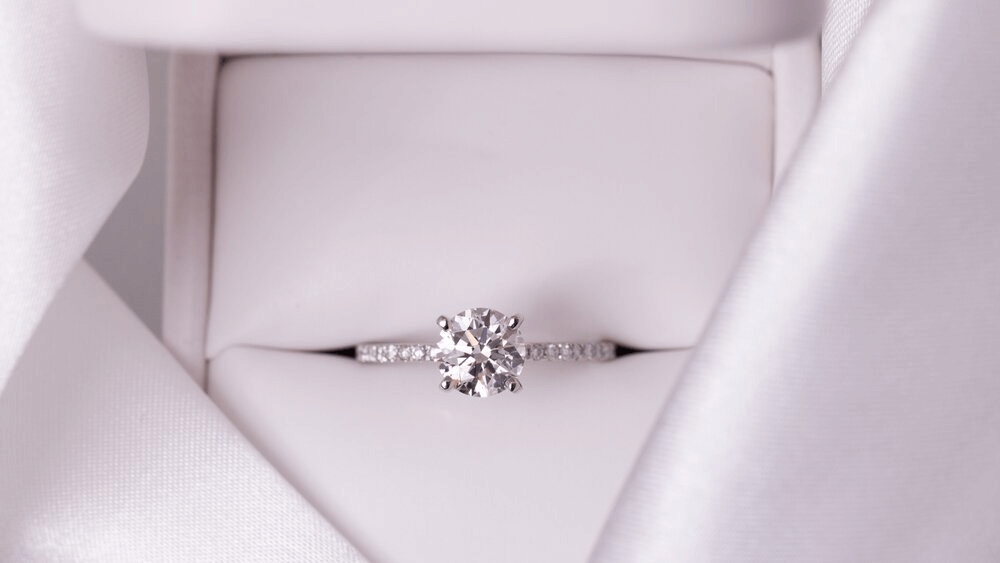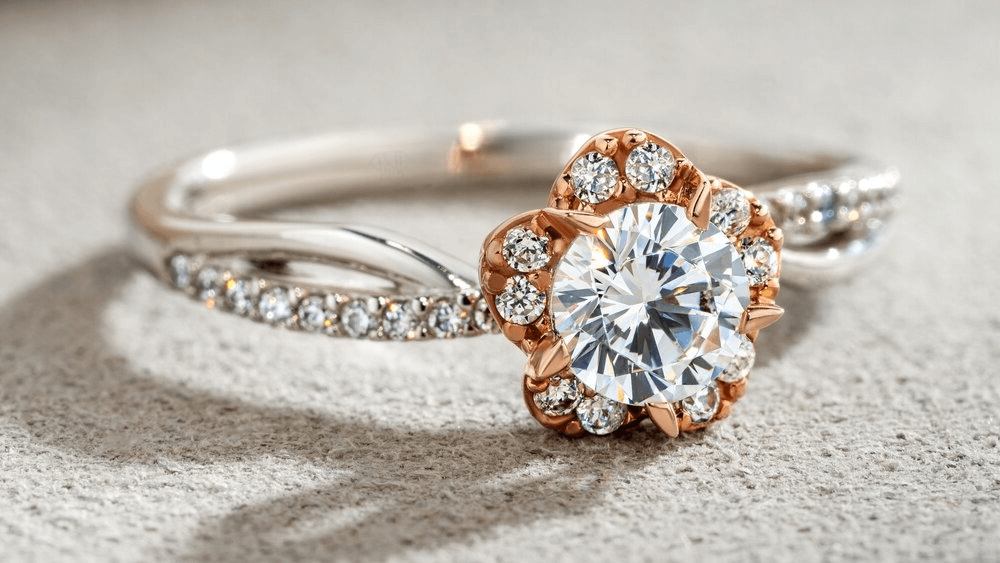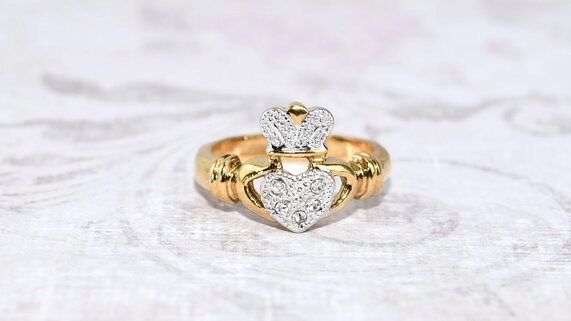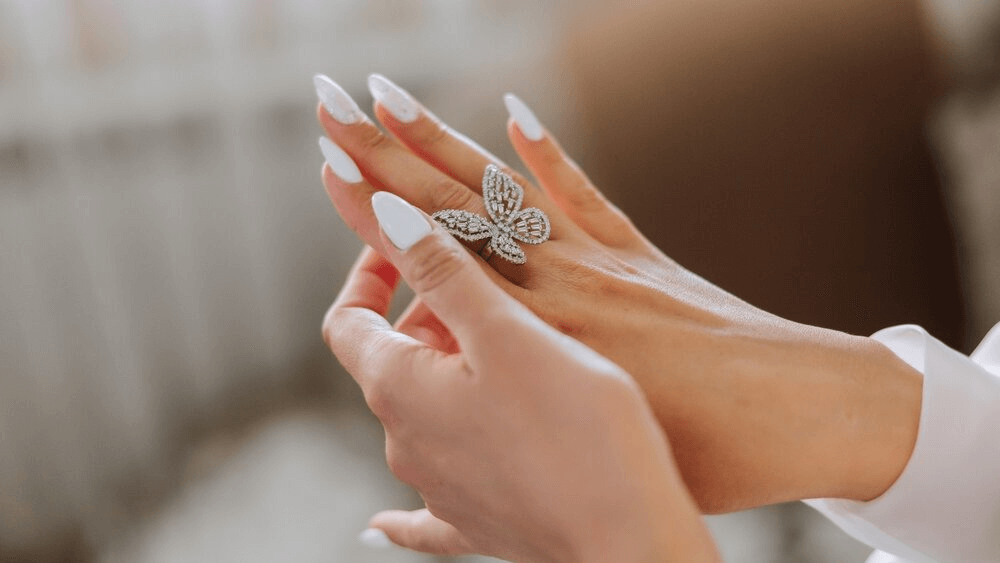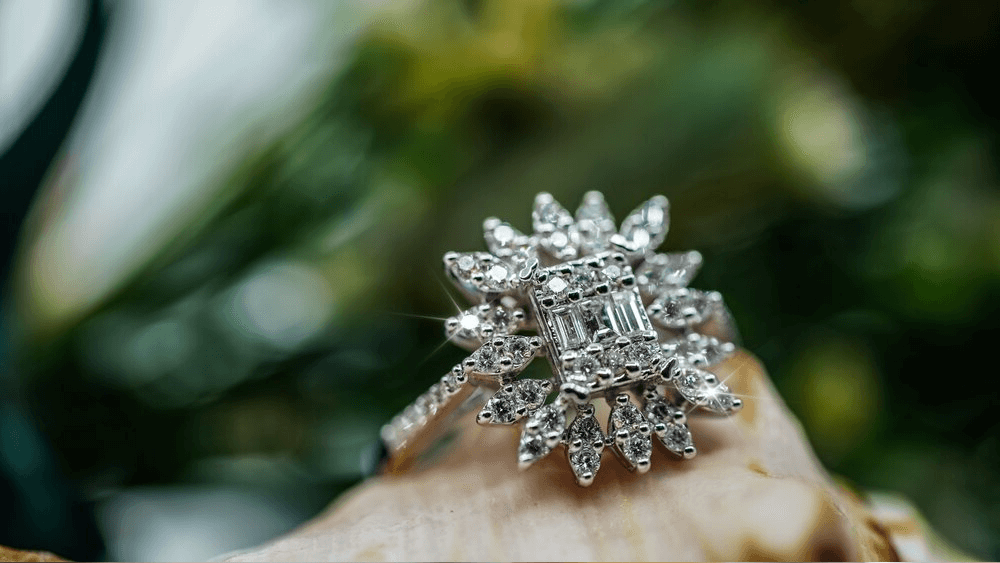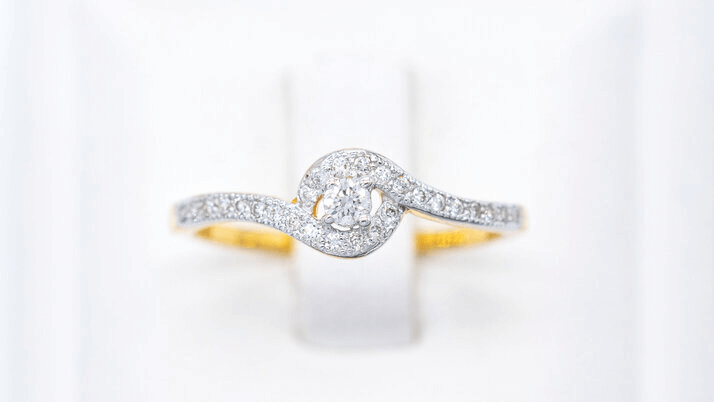Maximize Sparkle: Tips to Make Your Diamonds Look Bigger

By Gary A.

Edited by Olivia H.
Published Mar 12, 2022
Edited on Dec 18, 2024
When choosing a ring, the right settings that make diamonds look bigger can give your stone an impressive presence, making it appear more brilliant and larger than its carat weight suggests.

Navigate this guide:
- 7 Quick Tips for Maximizing the Appearance of Your Diamond Engagement Ring Settings
- Introduction
- The Role of Settings that Make Diamonds Look Bigger
- Key Settings for Enhancing Diamond Size
- Additional Size Enhancement Strategies
- Our Expert Take
- 6 Frequently Asked Questions About Diamond Engagement Ring Settings
Before we dive deeper into the specifics, here are some practical tips to help guide your decision-making process:
7 Quick Tips for Maximizing the Appearance of Your Diamond Engagement Ring Settings
- Tip 1:Choose a Halo Setting Why It Works: A halo setting surrounds the center diamond with smaller diamonds, creating an illusion of a larger main stone. This setting not only enhances the size visually but also adds additional sparkle. Things to Consider: Opt for a single row of small, evenly matched melee diamonds in the halo to maintain the emphasis on the central diamond.
- Tip 2:Consider the Cathedral Setting Why It Works: The Cathedral setting elevates the diamond, giving it a more prominent and larger appearance. This setting lifts the diamond high above the band, allowing more light to enter the stone, thereby enhancing its size and sparkle. Things to Consider: Ensure the arc or “cathedral” is proportional to the diamond size to avoid overshadowing the stone.
- Tip 3:Select a Thin Band Why It Works: A thinner band can make the central diamond appear larger in contrast. The slim profile of the band draws attention directly to the diamond, making it the focal point of the ring. Things to Consider: Balance is key. Too thin a band might compromise the ring’s durability, especially for daily wear.
- Tip 4:Opt for a Four Prong Setting Why It Works: A four-prong setting exposes more of the diamond than a six or eight-prong setting, allowing more light to enter and exit the stone, which can make the diamond appear larger. Things to Consider: The security of the diamond should not be compromised. Ensure the prongs are well-made and securely hold the diamond.
- Tip 5:Consider the Illusion Setting Why It Works: Illusion settings typically use a reflective plate or additional facets around the diamond, creating the illusion of a larger stone. Things to Consider: This setting requires precise craftsmanship to ensure that the illusion complements the diamond rather than detracts from it.
- Tip 6:Evaluate the Diamond’s Cut Why It Works: A well-cut diamond will reflect light more efficiently, making it appear larger and more brilliant. The cut quality can significantly impact how large the diamond looks. Things to Consider: Look for cuts that enhance the diamond’s depth and table size, as they can influence the perceived size.
- Tip 7:Choose Elongated Diamond Shapes Why It Works: Elongated shapes like oval, marquise, or pear often appear larger than round or square cuts of the same carat weight due to their extended shape. Things to Consider: Ensure the shape complements the wearer’s hand and that the setting aligns well with the chosen diamond shape for maximum impact.
Now that you’ve got these practical tips, use Jeweler AI below to find the perfect engagement ring that suits your style and budget:
Introduction
While there’s a lot more to buying a good diamond than getting the largest one your money can buy, size is probably always going to be a priority for the majority of shoppers.
More so than good clarity or color – or even the more nuanced aspects of a high-quality cut – size is a keen indicator of wealth and prestige. Plenty of movies and marketing campaigns over the decades have emphasized the fact that, when it comes to a diamond, shoppers better ‘go big or go home’.
The trouble is that big diamonds cost big money – more than most of us can fathom spending. And, while size is not synonymous with the phrase ‘beautiful diamond’, most of us are eager to make the biggest statement possible – and to make the most of our diamond’s size.
The Role of Settings that Make Diamonds Look Bigger
You’re never going to make a 1 carat diamond look like a 5 carat diamond, but certain settings can – and do – create a very convincing illusion of a stone that’s a little larger than it really is. This effect is created by a combination of allowing extra light to enter (and leave) the diamond since a bright sparkle makes the diamond appear bigger and more commanding of attention. At the same time, a setting that shows off as much of the diamond as possible – particularly its girdle – will always make the diamond look bigger than it would in a setting that covers more of those edges.
Key Settings for Enhancing Diamond Size
Don’t choose a setting just because it maximizes the size of a diamond, but it’s always worth knowing the easiest tricks for getting the most out of your stone.
Cathedral Setting: Elevation for Impact
Does a higher setting make a diamond look bigger? Absolutely – and a Cathedral setting is one of the easiest tricks when it comes to giving your diamond the elevation it needs to stand out, and tower over the wearer’s finger.
The Cathedral setting is characterized by a tall arc – a little like the gothic windows and doors of an old Cathedral – that raises the center setting high above the shank and finger. You can keep it simple to retain the solitaire design of your ring or combine it with pavé, a halo setting, or accent stones for something more ornate.
Check out our guide to the Cathedral setting.
Halo Setting: Adding Bulk and Sparkle
We’re going to start off by focusing on the catch: there’s a fine line between a halo that seems to add weight to your diamond and a halo that seems to take it away.
Halos are highly popular features in engagement rings. A square or circle of pavé diamonds placed around the girdle of your diamond adds significantly more sparkle and bulk to the center setting and, as a result, gives the illusion of a much larger diamond. It’s a great feature for drawing the eye inward.
To create the impression of a larger diamond, you’ll want to incorporate pretty small melee diamonds into your halo and consider sticking to a single row. If they’re too large, or the diamond is encircled within too many halos, it’ll start to look swamped by the setting, rather than accentuated.
Floating and Four Prong Settings: Maximizing Exposure
There’s more than one way to make a diamond appear as though its floating, and every option ensures that you get to keep as much of your diamond exposed to the light as possible. As a result, not only will it sparkle more, but onlookers will be able to see more of it, meaning you get the most out of every millimeter of surface area.
Again, there are a lot of different ways for a jeweler to achieve this. We’ve written a more comprehensive guide to floating diamond engagement rings here if you’re interested to learn more.
Prongs are very small, and a well-made setting won’t encroach too much on the edges of your diamond but, even so, the more prongs you have curling over the edge of your diamond, the more constrained it appears.
Settings that utilize four prongs are among the most common, but some setting styles do utilize six – or even eight – prongs to keep the diamond in place. We’ve weight up both sides of the four prongs vs. six prongs argument before at WillYou.com, but the four prong setting’s ability to accentuate the size of a diamond is a definitive mark in its favor.
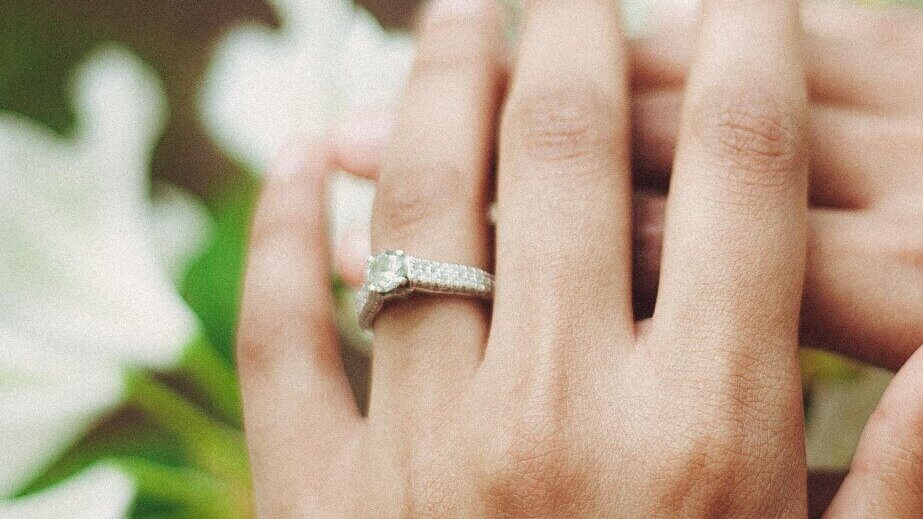
Additional Size Enhancement Strategies
Certain additions to your ring’s design will also help create a little extra wow factor.
The Impact of Accent Stones
If you like the idea of accenting your ring with smaller diamonds, but aren’t quite sold on the halo, then utilizing a couple of accent stones on either side of the diamond is a great way to emphasize the size of that center stone.
Marquise diamonds make great accents. When placed horizontally on the shank, they naturally draw the eye toward the ring’s center (where your diamond is), while also adding sparkle and creating a noticeable contrast between ‘large’ and ‘small’.
Baguette diamonds are also effective at drawing the eye where you want them to go – particularly if they are tapered. With the wider end placed next to the center diamond, the illusion of a loftier, larger center to your ring.
The Psychological Effect of Band Thickness
A thicker band will make a diamond appear smaller since those expected proportions will be skewed. Skinny band engagement rings are created for giving a diamond more weight – but, for practicality and aesthetics, a normal band thickness of around 2-3mm is best.
Our Expert Take
There’s no one way to make your diamond look its very best. There are certainly ways of getting as much sparkle and visibility as possible out of your stone with settings that make diamonds look bigger, but it’s always important to remember that your partner’s preferences should take precedence.
Yes, a bezel ring will make a diamond look a little smaller than a floating setting, but that’s a price worth paying if your partner loves the setting.
6 Frequently Asked Questions About Diamond Engagement Ring Settings
- Q: What setting will make my diamond look the biggest?
- A: Halo settings are known to make the central diamond appear larger due to the surrounding smaller diamonds. The illusion and cathedral settings also effectively enhance the perceived size of the diamond.
- Q: Does the band thickness affect how big the diamond looks?
- A: Yes, a thinner band can make the diamond look larger by contrast. It draws more attention to the stone, making it the centerpiece of the ring.
- Q: Are certain diamond shapes better for making the diamond look bigger?
- A: Elongated shapes like oval, marquise, or pear tend to appear larger than round or square cuts of the same carat weight, due to their extended surface area.
- Q: Do more prongs on a setting make a diamond look smaller?
- A: Generally, yes. A four-prong setting can make a diamond look larger than a six or eight-prong setting because it exposes more of the diamond to light.
- Q: Can the color of the band make the diamond appear larger?
- A: Light-colored bands, like white gold or platinum, can sometimes make the diamond appear larger and more brilliant due to the reflection and lesser contrast with the diamond.
- Q: Is a higher setting always better for making a diamond look larger?
- A: While higher settings like the cathedral can give the illusion of a larger stone, the setting should be proportional to the diamond size and wearer’s comfort.
- Q: How does a halo setting make a diamond look bigger?
- A: A halo setting surrounds the main diamond with smaller diamonds, creating an optical illusion of a single, much larger stone.
- Q: Are illusion settings a good choice for enhancing the diamond size?
- A: Yes, illusion settings use reflective surfaces or strategic placement of smaller stones to create the appearance of a larger central diamond.
Elevate your diamond’s brilliance with Jeweler AI. Discover the ideal setting to make your gem dazzle like never before!
FOLLOW-UP GUIDE SERIES





